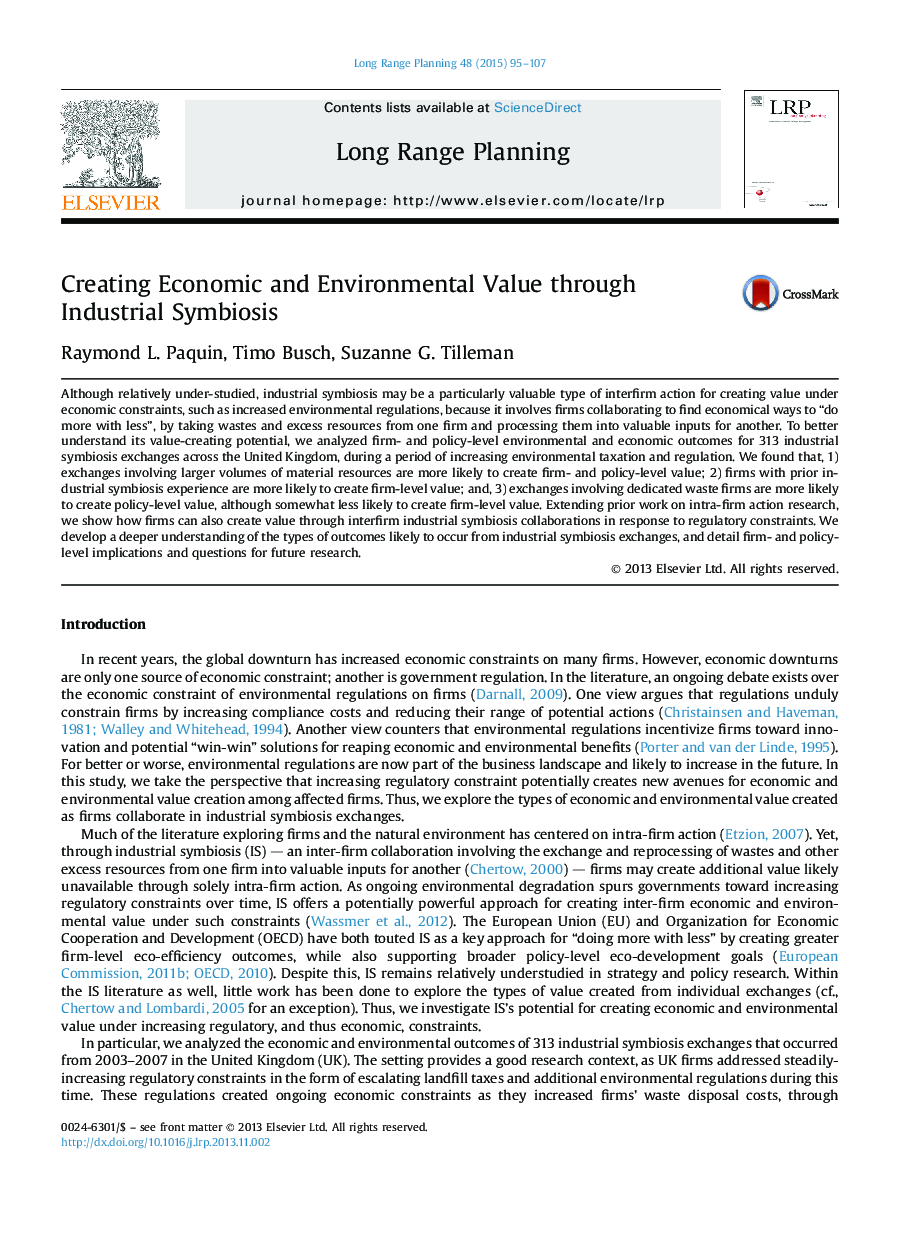| Article ID | Journal | Published Year | Pages | File Type |
|---|---|---|---|---|
| 1021314 | Long Range Planning | 2015 | 13 Pages |
Although relatively under-studied, industrial symbiosis may be a particularly valuable type of interfirm action for creating value under economic constraints, such as increased environmental regulations, because it involves firms collaborating to find economical ways to “do more with less”, by taking wastes and excess resources from one firm and processing them into valuable inputs for another. To better understand its value-creating potential, we analyzed firm- and policy-level environmental and economic outcomes for 313 industrial symbiosis exchanges across the United Kingdom, during a period of increasing environmental taxation and regulation. We found that, 1) exchanges involving larger volumes of material resources are more likely to create firm- and policy-level value; 2) firms with prior industrial symbiosis experience are more likely to create firm-level value; and, 3) exchanges involving dedicated waste firms are more likely to create policy-level value, although somewhat less likely to create firm-level value. Extending prior work on intra-firm action research, we show how firms can also create value through interfirm industrial symbiosis collaborations in response to regulatory constraints. We develop a deeper understanding of the types of outcomes likely to occur from industrial symbiosis exchanges, and detail firm- and policy-level implications and questions for future research.
